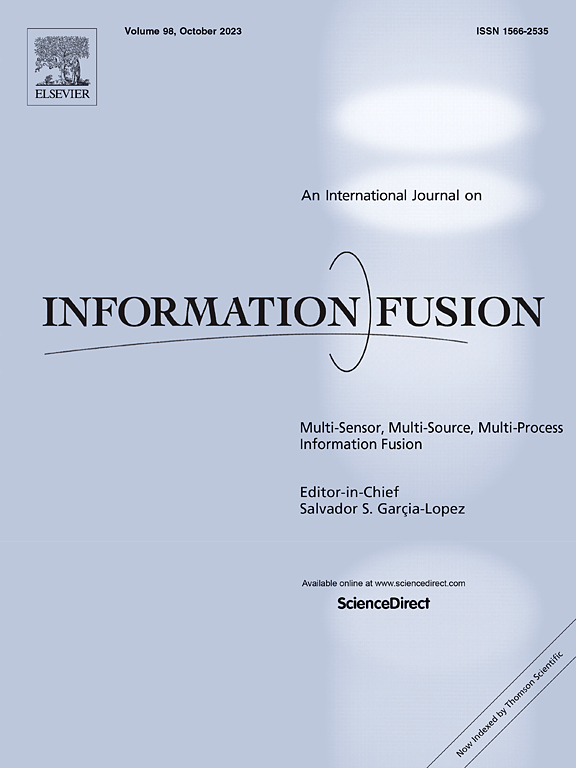GraphEdge: Dynamic graph partition and task scheduling for GNNs computing in edge network
IF 15.5
1区 计算机科学
Q1 COMPUTER SCIENCE, ARTIFICIAL INTELLIGENCE
引用次数: 0
Abstract
With the exponential growth of Internet of Things (IoT) devices, edge computing (EC) is gradually playing an important role in providing cost-effective services. However, existing approaches struggle to perform well in graph-structured scenarios where user data is correlated, such as traffic flow prediction and social relationship recommender systems. In particular, graph neural network (GNN)-based approaches lead to expensive server communication cost. To address this problem, we propose GraphEdge, an efficient GNN-based EC architecture. It considers the EC system of GNN tasks, where there are associations between users and it needs to take into account the task data of its neighbors when processing the tasks of a user. Specifically, the architecture first perceives the user topology and represents their data associations as a graph layout at each time step. Then the graph layout is optimized by calling our proposed hierarchical traversal graph cut algorithm (HiCut), which cuts the graph layout into multiple weakly associated subgraphs based on the aggregation characteristics of GNN, and the communication cost between different subgraphs during GNN inference is minimized. Finally, based on the optimized graph layout, our proposed deep reinforcement learning (DRL) based graph offloading algorithm (DRLGO) is executed to obtain the optimal offloading strategy for the tasks of users, the offloading strategy is subgraph-based, it tries to offload user tasks in a subgraph to the same edge server as possible while minimizing the task processing time and energy consumption of the EC system. Experimental results show the good effectiveness and dynamic adaptation of our proposed architecture and it also performs well even in dynamic scenarios.
graphhedge:边缘网络中gnn计算的动态图分区和任务调度
随着物联网(IoT)设备的指数级增长,边缘计算(EC)在提供高性价比服务方面逐渐发挥着重要作用。然而,现有的方法很难在用户数据相关的图结构场景中表现良好,例如交通流量预测和社会关系推荐系统。特别是,基于图神经网络(GNN)的方法导致了昂贵的服务器通信成本。为了解决这个问题,我们提出了graphhedge,一种高效的基于gnn的EC架构。它考虑了GNN任务的EC系统,其中用户之间存在关联,在处理用户的任务时需要考虑其邻居的任务数据。具体来说,体系结构首先感知用户拓扑,并在每个时间步骤将其数据关联表示为图形布局。然后调用我们提出的分层遍历图切算法(HiCut)对图布局进行优化,该算法根据GNN的聚合特性将图布局分割成多个弱关联子图,从而最小化了GNN推理过程中不同子图之间的通信开销。最后,在优化图布局的基础上,执行我们提出的基于深度强化学习(DRL)的图卸载算法(DRLGO),得到用户任务的最优卸载策略,该卸载策略是基于子图的,它尽量将子图中的用户任务卸载到同一边缘服务器上,同时最小化EC系统的任务处理时间和能耗。实验结果表明,该结构具有良好的有效性和动态适应性,即使在动态场景下也具有良好的性能。
本文章由计算机程序翻译,如有差异,请以英文原文为准。
求助全文
约1分钟内获得全文
求助全文
来源期刊

Information Fusion
工程技术-计算机:理论方法
CiteScore
33.20
自引率
4.30%
发文量
161
审稿时长
7.9 months
期刊介绍:
Information Fusion serves as a central platform for showcasing advancements in multi-sensor, multi-source, multi-process information fusion, fostering collaboration among diverse disciplines driving its progress. It is the leading outlet for sharing research and development in this field, focusing on architectures, algorithms, and applications. Papers dealing with fundamental theoretical analyses as well as those demonstrating their application to real-world problems will be welcome.
 求助内容:
求助内容: 应助结果提醒方式:
应助结果提醒方式:


